Results 1 to 10 of 11
Thread: Full Rotation of Oilstones
Hybrid View
-
06-15-2014, 05:10 PM #1Senior Member


- Join Date
- Jul 2011
- Posts
- 2,110
Thanked: 459 Full Rotation of Oilstones
Full Rotation of Oilstones
Given the recent threads about hard arkansas, I had two razors to set bevels on and hone today - a friodur 451 and a razor marked griffon 99 (though I think it's much newer than the mark would imply).
I use arkansas stones a lot, but more for tools. But I dug out a good typical progression for honing razors and got both of the razors bevels set and honed through shave ready in about 40 minutes.
Here's the rotation, from left to right, a soft arkansas, a razor washita (this is the finest washita I have by far, out of 10), and came in a strop top box where someone had been using it for razors as they had allowed it to load. I lapped it and got a smoothed surface. Anyway, third is a semi-translucent hard arkansas, and to the right is the chinese agate, which is a bit finer than the hard ark.
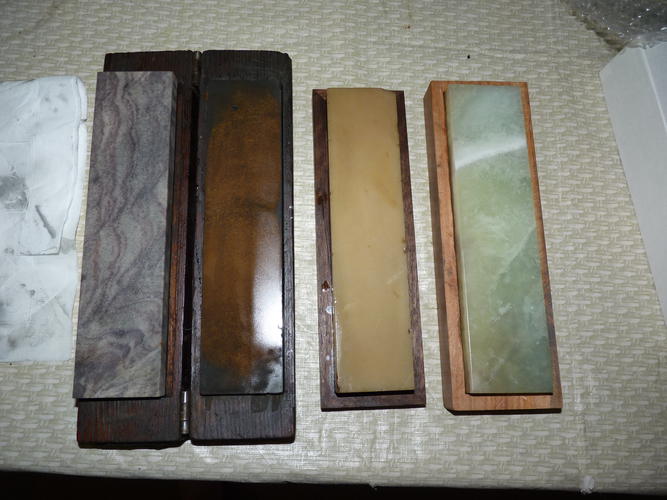
Here's a razor after being honed by the washita:

Then after the bone colored hard (which is only slightly finer than the prior washita, but much finer than most washitas):
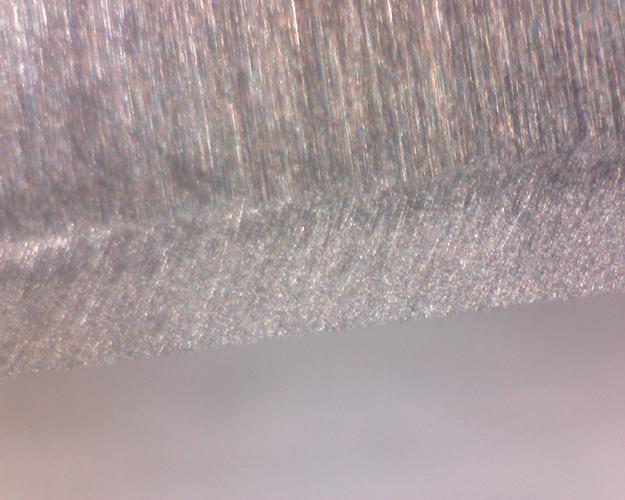
And after the chinese agate (I was wrong about this stone because it's so slow - it's a great follow on to a translucent ark, but not good to follow anything more coarse than that):
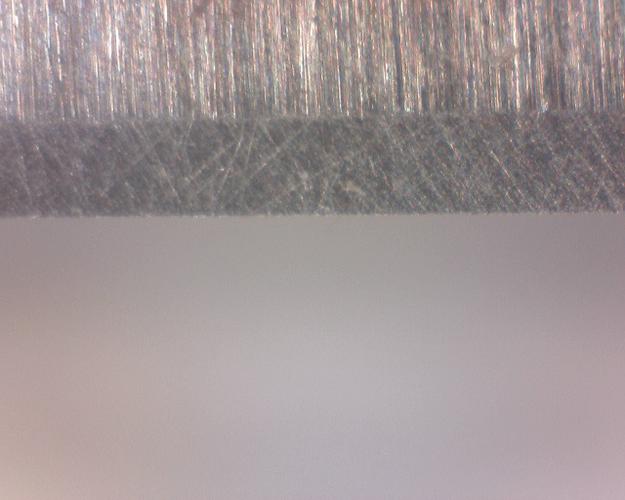
-
The Following User Says Thank You to DaveW For This Useful Post:
ScoutHikerDad (06-15-2014)
-
06-15-2014, 05:10 PM #2Senior Member


- Join Date
- Jul 2011
- Posts
- 2,110
Thanked: 459
Pictures of the stone surfaces:
Soft arkansas:
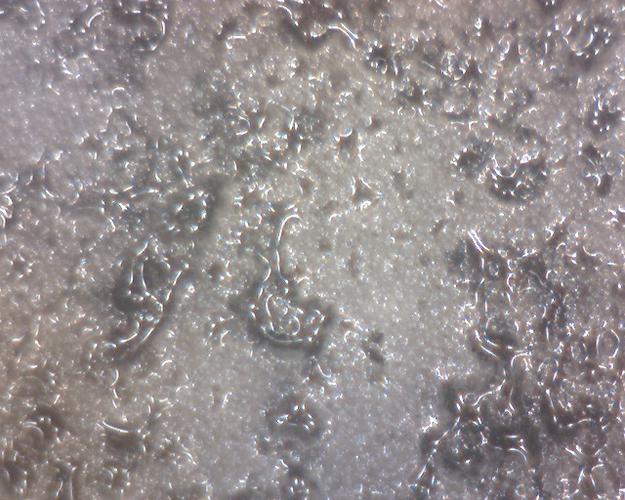
Washita (most would look more porous than this):

Hard Novaculite Surface:
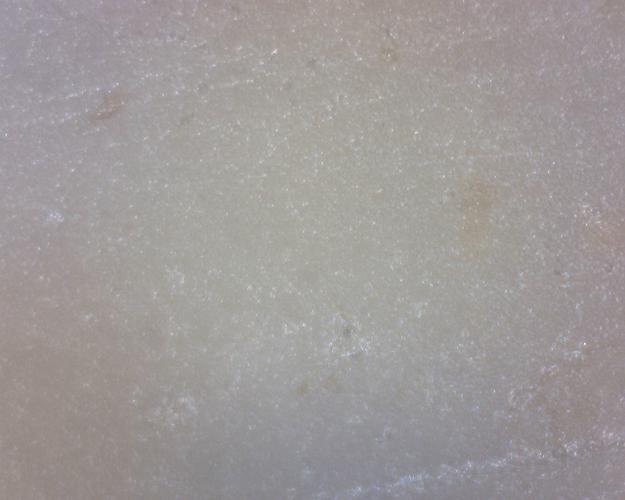
Chinese Agate:
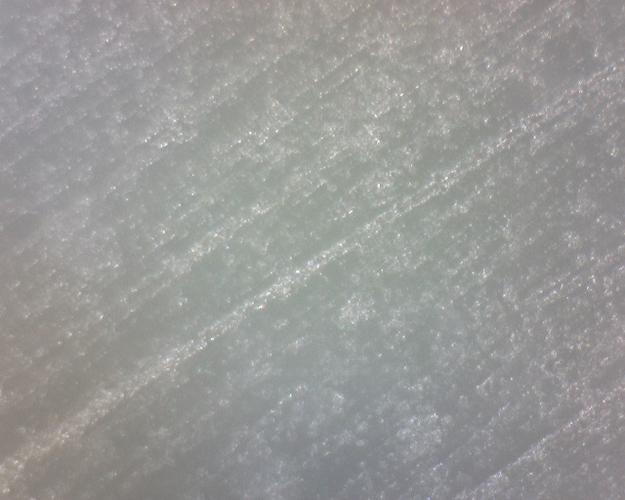
The hard/bone colored stone looks finer in pictures, but it cuts less fine and shaves less fine. The bevels tell the story a little bit, but the shave off of the two of them tells a lot. Off of the bone novaculite, the shave is crispy and keen, but off of the agate (as long as it's coming off of a suitably fine stone) the shave is smoother and closer.
The razor pictures show a lot of scratches, but the light reflection is a little misleading -the quality of the edge right at the edge shows that none of the scratches are very deep.Last edited by DaveW; 06-15-2014 at 05:24 PM.
-
06-15-2014, 05:38 PM #3

Sounds (and looks) like a nice progression. Very nice looking stones. I'm not at all familiar with the Chinese stone, can you tell me more?
-
06-15-2014, 06:01 PM #4Senior Member


- Join Date
- Jul 2011
- Posts
- 2,110
Thanked: 459
It is one of the green chinese stones that are ubiquitous on ebay and alibaba. 8x2, about $80 or a little less if bought right.
Too slow to be useful in anything other than a follower for another finisher. You can see some pretty deep lapping scratches on the surface, it'll be eons before they come out. It is a stone that I bought to use in the shop, but it's too slow for tools, except possibly to refine a paring chisel, and even at that, it's a waste of time.
They have large feeling particles and aren't particularly impressive right after they're lapped, but they quickly break in to cutting very slowly if you clean the surface off a couple of times and use them until there are no loose particles and the surface looks mirror. And then, unlike a novaculite stone, they're not particularly sensitive to pressure.
The edge off of it is as keen (without any harshness) as anything that I've used of any type. It is beyond the sharpness of an escher and well beyond a coticule. The hard ark shown is between escher and coticule in sharpness for all but the best coticules (I have one coticule that is as fine, and many that are not as fine), though a coticule edge is a little less harsh.
-
06-15-2014, 09:16 PM #5Senior Member

- Join Date
- Apr 2014
- Location
- Yorkshire , England
- Posts
- 356
Thanked: 44
What magnification is that? I do like microscope shots they reveal allot

-
06-15-2014, 10:52 PM #6Senior Member


- Join Date
- Jul 2011
- Posts
- 2,110
Thanked: 459
It's a visual microscope that claims to be 200x. Maybe there is a way to make it work that fine, but I think it's a bit less fine than that. It does allow you to see things at the edge that you can't begin to see with the naked eye, but the reflection of light can be deceiving. Something like chromium oxide powder somehow makes a bevel that doesn't reflect anything, but it's no more sharp than the chinese agate edge shown here that does show some scratches.
In addition, the surfaces of the stone don't really show the texture you'd like them to show. You can vaguely make out the individual particles on the soft ark, etc, the little spots that are within each color change. On this picture, which is the white side of a woodworker's delight (something very similar to a lilywhite arkansas that is a little more porous and intended for tools), you can feel that it's got a little bite even on your finger tips. If I ran a tool across it, it would leave a streak of black on it, but it hardly looks any more coarse because the light isn't really reflecting that.
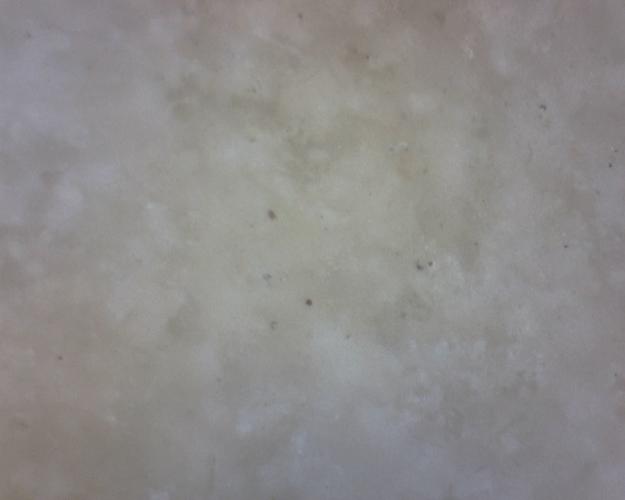
SEM pictures are nicer to deal with because they really show texture. Of course, this microscope was about $20 and I have to hold the viewfinder against the stone or razor with one hand and click the "capture" button with the other. What you can learn from your own honing is worth the $20 though.


 11Likes
11Likes LinkBack URL
LinkBack URL About LinkBacks
About LinkBacks






 Reply With Quote
Reply With Quote
